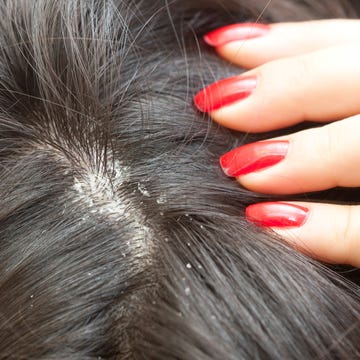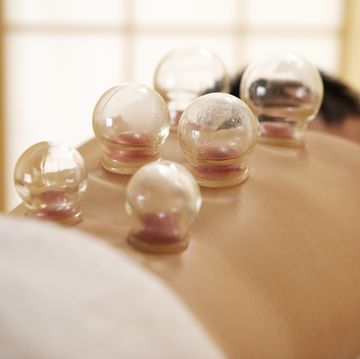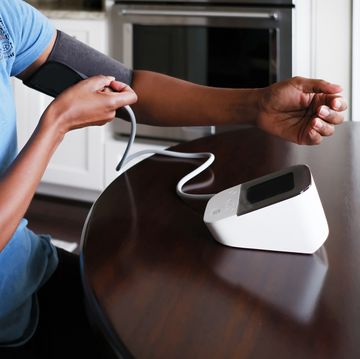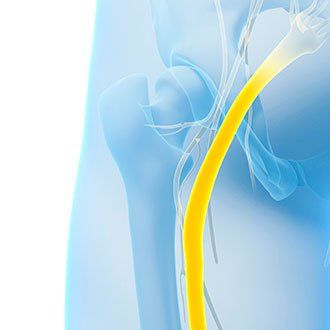What it is
Some of the 11.5 million Americans with carpal tunnel syndrome (CTS) can't turn this page without sharp pain, tingling, burning, numbness, or weakness in their hands and wrists. Many can't sleep due to such symptoms, says Daniel Osei, MD, assistant professor at Washington University School of Medicine.
Why it happens
Many things—including injury, pregnancy, and (possibly) repeatedly flexing and bending your wrist—can narrow the bony passageway called the carpal tunnel, which is in your wrist. Symptoms occur when the median nerve, which travels through the tunnel, gets squeezed, often by swollen tissue. The pain can reach as far as your shoulders; untreated CTS may result in nerve damage.
Wet cupping
An ancient Chinese technique, wet cupping involves pricking the skin around relevant acupuncture points and placing glass cups to apply suction to that area for 5 to 10 minutes. A 2009 German study of 52 people found that a single session eased carpal tunnel pain and symptoms for 1 week. Scientists don't know why the technique works for CTS pain—it may provide a counterirritant—but wet cupping is generally considered safe if performed by a qualified acupuncturist.
MORE: How Energy Healing Works
Acupuncture
People with mild to moderate CTS who were treated with this traditional Asian therapy eight times over the course of a month were more likely to get pain relief than those who took medications, a 2011 Chinese study found.
"Acupuncture may reduce inflammation, relieving the nerve's compression," says Holly Zhao, MD, associate professor at the University of California, Davis. Although other research suggests that placebo (fake) acupuncture is as effective as the real deal, that doesn't dampen Dr. Zhao's enthusiasm for the therapy: She's seen lots of people with CTS respond to acupuncture.
MORE: Science-Backed Benefits Of Acupuncture
Yoga
Iyengar yoga improved grip strength and allowed CTS patients to skip using wrist splints for pain, a small University of Pennsylvania Medical School study found. Participants practiced a 60- to 90-minute program twice weekly for eight weeks. Iyengar emphasizes proper body alignment, which the study found may ease pressure on your nerves. (New to yoga? Try this gentle, 15-minute routine.)
Botox
It stops wrinkles, and it may be able to stop pain. A clinical trial now under way at the University of Minnesota may suss out whether injections of Botox (botulinum toxin A) can treat CTS pain as well as anti-inflammatory corticosteroid shots do. By preventing the release of a neurotransmitter, Botox interferes with the communication between nerves and muscles, so researchers are hopeful that it can help ease carpal tunnel pain, even though earlier studies haven't provided much evidence for this use.
Ice
If you think your CTS is caused by repetitive action, apply ice to your wrists twice a day for 15 to 20 minutes at a time. The cold reduces swelling and the resulting pain. For best results, try an ice pack or a bag of frozen peas wrapped in a towel.
Rest
If you do anything that flexes and bends your wrists or fingers repeatedly, such as knitting, this may contribute to or worsen your CTS, so try to take a 5-minute break every hour. If you work on a computer all day, don't spend your free time playing computer games. Strategies like these may ease mild to moderate CTS, says Debbie Amini, EdD, assistant professor of occupational therapy at East Carolina University.
Carpal tunnel stretch
Dr. Amini and other experts recommend this simple exercise to improve CTS symptoms: Touch the tip of your thumb to the tip of your little finger. Then bend your three middle fingers over this bridge, toward your palm. Using your other hand, pull on those middle fingers, trying to straighten them. As you resist the tug, your wrist tendons will push the carpal tunnel out, stretching it a little to help make room for the nerve. Do this five times, holding each stretch for a count of five. Repeat the exercise three times daily. (For more stretching relief, try this Foam Roller Workout.)
Ergonomics
"You don't want to bend or flex your wrists too much in a short period of time," says Dr. Amini. An occupational or physical therapist can show you how to position your wrists correctly when you perform actions that might otherwise irritate the median nerve. For instance, if computer work triggers symptoms, a therapist will make sure that when you're sitting, your elbows are bent at 90-degree angles to the keyboard and your fingers rest lightly on the keys. Insurance often covers these visits with a therapist.
MORE: 12 Natural Ways To Ease Pain
Self-Massage
Apply lotion to your fingers and gently massage your hand, moving from the tips of your fingers across your palm and past your wrist to your forearm, advises Dr. Amini. Repeat this at least twice a day for 5 to 10 minutes. (Keep the relief coming with these 5 Ways To Give Yourself An Awesome Massage.)
Wrist splints
"This is probably the most important option patients have, short of surgery," says Aaron Daluiski, MD, assistant attending orthopedic surgeon at the Hospital for Special Surgery in New York City. Splints keep wrists from bending too much, so you won't aggravate inflammation in the carpal tunnel. Your doctor or therapist may suggest that you wear one whenever you do anything that brings on symptoms, including sleeping with your hands in a position that pinches the median nerve.
Oral steroids and corticosteroid injections
Prescription medications such as oral steroids and corticosteroid shots may take the edge off pain, but they're best considered temporary fixes; in most cases, the drugs don't affect the underlying condition. "If someone's median nerve is still compressed, symptoms will continue once steroids are stopped," says Dr. Osei. If you have a lot of swelling or need temporary relief while awaiting surgery, your doctor might prescribe a 6-day course of the pills—but that's it: Longer stints raise your risk of side effects such as high blood pressure and glaucoma. Also, Dr. Daluiski says that he rarely gives patients more than one shot due to possible side effects such as ruptured tendons.
The right diagnosis
"The diagnosis of CTS is infamously attached to any pain or weakness in the hand," says Suparna Damany, founder of Hands on Healing Physical Therapy in Allentown, PA. Many other conditions, including muscle tightness in the neck and shoulder, cause the same symptoms, and the wrong diagnosis may lead to unneeded surgery. She advises working with your GP and a physical therapist to get the right diagnosis and treatment.
Surgery
The goal of surgery is to free the median nerve by cutting the transverse carpal ligament, which forms the roof of the carpal tunnel. During endoscopic surgery, the surgeon makes a tiny incision in the wrist (or wrist and palm) and inserts a thin, flexible tube with a lighted camera on the end, so the tunnel can be seen on a computer screen. She then uses a tiny tool to snip the ligament. In open surgery, she makes an inch-long incision in the wrist to reach the ligament. There's about a 10% risk of losing some wrist function.
MORE: 10 Pros With Surprising Pain Solutions

Catherine Winters has been an editor at numerous magazines, including Parents, Health and Good Housekeeping. An award-winning writer, she has covered health, beauty, fitness and nutrition for many magazines, newsletters and websites, including Prevention, Ladies' Home Journal, New You, Consumer Reports, Self, Arthritis Today, LiveScience.com and Spryliving.com. She is a recepient of the 2014 MORE Award for excellence in orthopaedic reporting from the American Academy of Orthopaedic Surgeons.













